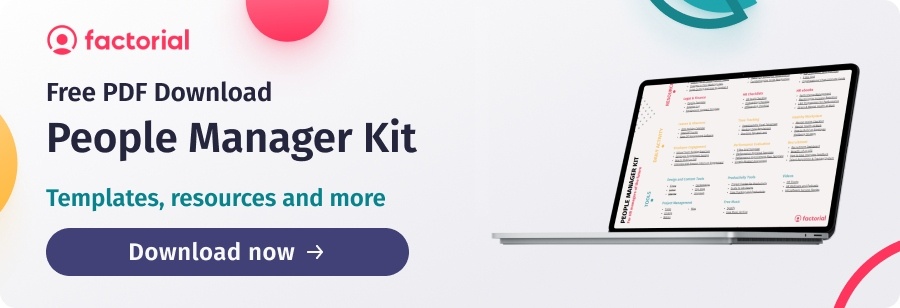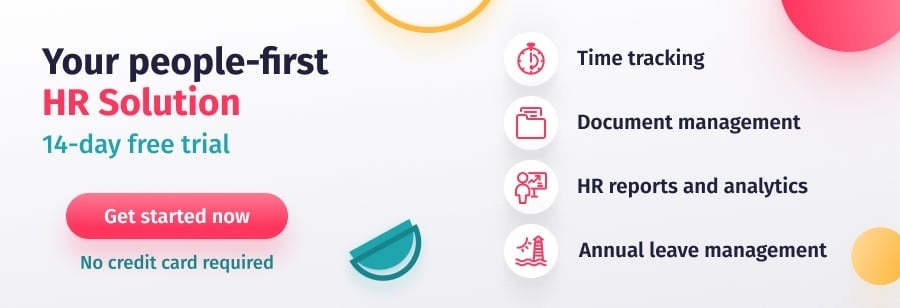Every company has its star members. These are the people that go above and beyond; they work efficiently, put themselves forward for projects, and are good at training other team members.
But are they high-potential employees, or just high performers?
High-potential employees, or HiPos, have the ability to progress into the most senior roles in your organisation. They have a serious growth mindset, have great leadership skills and constantly challenge themselves without much prompting.
According to Gartner, HiPo employees are 91% more valuable to organisations than non-HiPos, and adding one to a team boosts others’ productivity by up to 15%. It’s therefore crucial to identify your high-potential employees and nurture them so they’re ready to take on new roles, help motivate your teams and move your organisation forward.
To do so, you need to ensure you’ve got comprehensive talent development plans in place, set up coaching schemes and ensure you’ve got robust continued professional development programmes to get the best out of your high-potential team members.
Let’s dive into how you can identify and develop high-potential employees and help them move your business forward.

What is a High-Potential Employee?
High-potential employees possess exceptional capabilities that show their potential for future growth, advancement and leadership. They have the ability, engagement and aspiration to rise to and succeed in more senior, critical positions.
HiPos go beyond just being good at their jobs and achieving the goals set out by their managers – they actively want to learn and progress, and will find long-term solutions to problems.
So how do you distinguish between high-potential employees and high-performers?
The Difference Between High-Potential Employees and High-Performers
It’s important to remember that just because someone is a high performer, it doesn’t mean they’re a high-potential employee.
High-performers consistently deliver exceptional results in their role. They excel in their day-to-day tasks, meet or exceed performance expectations, and are often recognised for their achievements. However, they don’t necessarily show the potential to advance further in your organisation.
For example, a high-performing salesperson might be exceptional at closing a deal and meeting their key performance indicators, but they might not have the leadership skills to manage and train a team to do the same as them. This is the key difference between a high-performing employee and a high-potential employee.
High-potential employees will not only exceed their goals in their current roles, but they’ll have the qualities and drive to grow their careers and develop into leadership positions. They’ll stand out from their peers and show that they’re ready to take the next step in their career path.
Developing high-potential employees is key to company success. Managers that nurture these team members will get more out of them, and craft future leaders in the business.
Why Should You Identify and Develop High-Potential Employees?
There are plenty of reasons why you should identify and develop high-potential employees, but here are the main ones:
-
Helps you to retain talent
High-potential employees tend to be incredibly career-driven and will be on the constant lookout for new challenges. If you don’t give more responsibilities to these people or enrol them on development programmes, they’re likely to look for a new job in a company that will.
If you identify and nurture your HiPos, they’re more likely to stay with your business for longer – but you’ve got to make sure that you give them opportunities to grow and develop.

-
Helps with your succession planning
The key to a successful business is ensuring that you’ve got the right talent that will help drive the company forward, improve employee morale and create a positive work environment. And you can’t do this without having people in mind for the top leadership roles.
Even if your organisation is the most amazing place to work, people will always move on, whether it’s down to being headhunted, retirement or personal life matters. Having great candidates in mind to fill your most important roles ensures that you’re never left without someone steering the ship.
Identifying and developing your high-potential employees helps you to see who is up to the challenge of leadership roles in the future, and prepares them for when your top talent leaves or retires.
Plus, succession planning will give management the opportunity to assess the skills of the next generation of leaders. Considering a Rock Center study revealed that only 55% of corporate directors understand the strengths and weaknesses of their senior executives well or very well, this is a crucial point.
-
Gives you the competitive edge
Utilising your high-potential employees helps you to future-proof your company. HiPos often have a deep understanding of the organisation, your customers’ needs and your market.
Most companies expect that more than 40% of today’s leadership roles will look different in 5 years, so by developing and promoting high-potential employees into your current management roles, you’ll give your company the edge at staying ahead of an ever-changing business landscape.
How to Identify High-Potential Employees
It can be difficult to distinguish high-potential employees from high performers. To help you identify HiPos that are ready for new and challenging work and leadership duties, we’ve put together a list of the most common attributes you’ll find in a HiPo:
- Takes initiative and often comes up with new ideas.
- Self-motivated and likes to take on special projects.
- Takes constructive feedback well and works to develop new skills.
- Embraces change and isn’t afraid of additional responsibilities.
- Has a strong awareness of company goals and likes problem-solving to try to meet them.
- Fosters positive relationships with other team members and management, often being seen as a natural role model.
- Takes on leadership tasks without being asked and can take an idea and run with it.
- Is committed and engaged with the company’s culture and wants to see the organisation do well.
When you’re trying to identify your high-potential employees, make sure you look for these qualities – but also ensure you use a few key indicators to help you judge all your people fairly.

Here are a few steps you can take to help you identify HiPos in a fair way:
-
Measure KPIs
Make sure your managers and HR professionals set strong goals during performance reviews. Use a competency-based approach to ensure that these KPIs focus on the specific skills needed to perform your team member’s job well.
If a team member is exceeding their KPIs, they’re one to watch – but remember, not all high-performing employees are HiPos.
-
Assess their problem-solving skills
How does your team member deal with difficult situations when they arise? HiPos need to be flexible and adaptable, and not only solve problems but come up with strategies to prevent them from arising in the future.
-
Look for natural leaders
HiPos naturally take the lead on new projects and take initiative. You’ll often notice that they offer guidance to other employees and help them move out of their comfort zone. Look for people that go the extra mile to ensure that their team is working towards company goals.
-
Talk to colleagues and managers
One of the best places to start when you’re looking for top performers and high-potential employees is to see what their coworkers think of them. Do they get on well with others, no matter what their experience level? Do they motivate other team members to do well?
- Use the 9 Box Grid
The 9 box grid is a talent management model used to analyse and compare employee work performance and potential. It can also be used to reevaluate talent placement, improve succession planning, and identify performance issues and talent gaps. It facilitates employee growth and contributes to retention, engagement, and productivity.
Managers can map team members against two axes: current performance and future potential. Where they fall on the grid will depend on their combined scores. The higher the score, the more potential for growth. Watch the video below to learn more about how to use it.
Now that you know how to identify your HiPos, you need to make sure you develop them to help them grow into the strong leaders that you need them to be. But how do you do it?
How To Develop High-Potential Employees
It doesn’t have to be difficult to develop your HiPos. Make sure you’re doing these 4 things to help you get the best out of your strongest team members:
-
Provide coaching and mentoring
Possibly the most important aspect of developing and nurturing HiPos, coaching your high-potential employees helps them achieve more self-awareness about their strengths and weaknesses and gives them actionable plans to achieve their goals.
Set them up with a mentor that they can shadow – usually someone in a more senior role – so they can get an idea of what it’s like to do that job. Ensure the mentor helps them set goals to work towards alongside their other KPIs.
-
Create personalised learning and development programmes
A personalised learning and development programme will help HiPos progress further. Use feedback from their coach or mentor to help identify areas where they could benefit from extra training.
HiPos generally have their technical capabilities down to a tee (but not always), and it’s the soft skills that they might benefit from extra training on. Consider whether your team member would benefit from training on skills like conflict management or critical thinking.

-
Give regular feedback
HiPos thrive on constructive criticism. They want to know what they’re doing right and what they can improve on to progress in their role.
Nurturing professional development is crucial for all your people, but it’s particularly important for HiPos. If you leave them without direction for too long, they could get bored and start to look for roles elsewhere.
-
Set up clear career progression plans
As we’ve said, HiPos constantly want to move forward and challenge themselves, so setting them up with a clear career path will help them stay motivated.
Show your team members what skills and experience they need to gain to move on to the next role, giving them logical steps to follow to progress in their careers.
Giving your HiPos clear career progression plans helps to keep them motivated, gives them greater job satisfaction and ensures they feel a sense of direction and purpose.
Your organisation can’t afford not to identify and develop your high-potential employees. By coaching them for more senior roles, giving them personalised learning and development programmes and setting out clear career paths, you’ll help drive your business forward with top talent that will stick around and stay committed to your company goals.


